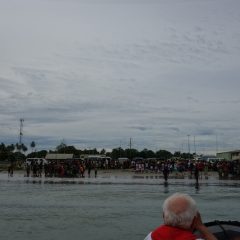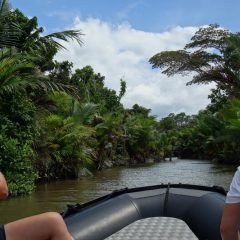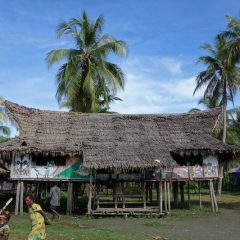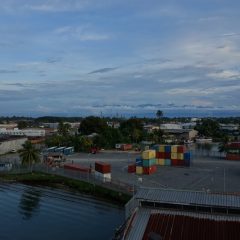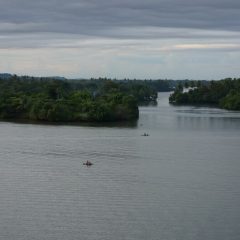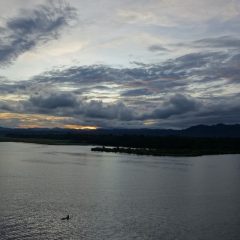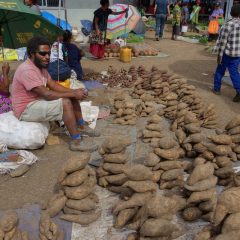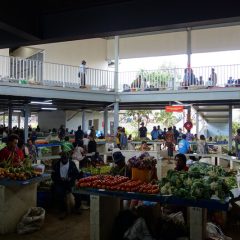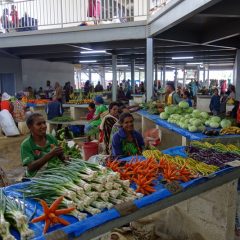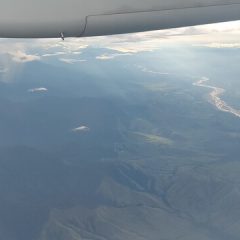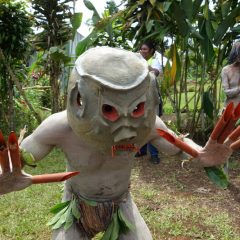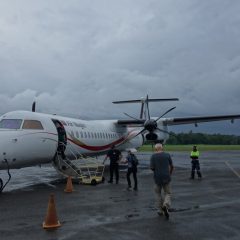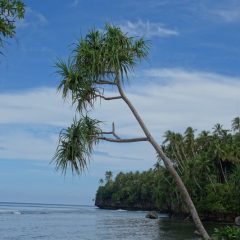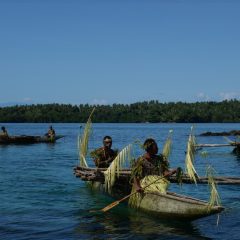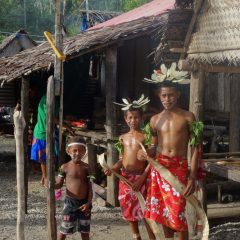After our near-retreat at the mudmen, we made it back to Goroka town for a late lunch at the Bird of Paradise hotel (including the option, to try SP Lager).
After lunch it was on to the local market and the JK Macarthy Museum. The latter featuring (next to other exhibits) plenty of historic photos from the region and a mournig necklace made from a human hand (no kidding). From the museum it was on to the modern airport (now with proper security – though I still wonder, how the souvenir arrows and the hammer made it through) for the half-hour-flight back to sea level.
